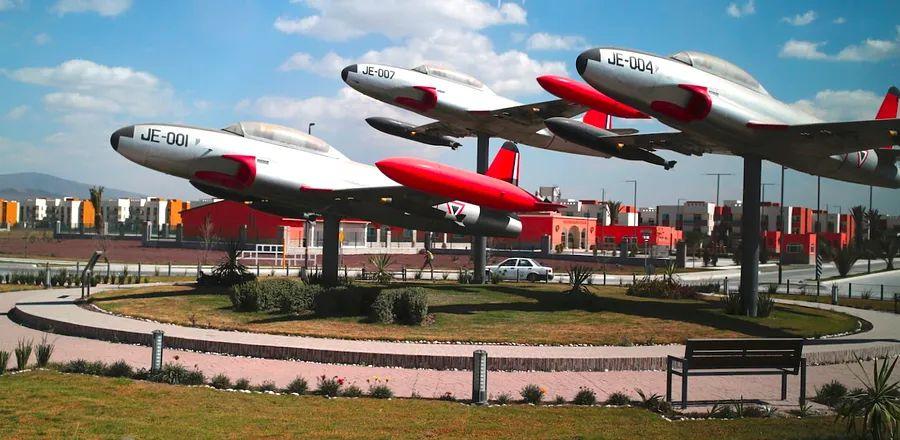Mexico Unveils New Airport Amidst Criticism and Controversy

On Monday, March 21, Mexican President Andrés Manuel López Obrador officially opened the Felipe Angeles International Airport in Mexico City, marking one of his key infrastructure projects.
The government showcased the event with considerable fanfare, even releasing a documentary featuring an army general conversing with a statue.
Constructed by the military on an army airbase, the terminal is named after an army general.
However, the new terminal is expected to accommodate only around 16 flights per day, partly due to its distance from the city, and with rail connections and expressways still pending. On its opening day, approximately 2,000 passengers utilized the new facility, a significant shortfall from the 2.4 million the government anticipates by year’s end.
The airport will only serve one international route, specifically a flight to Caracas, Venezuela, operated by a Venezuelan airline currently facing U.S. sanctions.
López Obrador acknowledged that the new terminal is favored more for cargo operations than for passenger flights.
“It’s merely a matter of airlines boosting their schedules,” the president stated. “As for cargo traffic, we’ve seen more advancements; the old airport in Mexico City is overwhelmed with cargo as well.”
The new Felipe Angeles airport in Mexico City exemplifies the contradictions and disparities of López Obrador’s governance.
There is a display of government frugality—his key campaign pledge is evident in the simplistic design of the terminal—alongside his typical heavy dependence on the Mexican military.
A documentary about the terminal's construction showcases an army general addressing and saluting a grand statue of General Felipe Angeles, who fought alongside Pancho Villa during Mexico’s Revolution from 1910 to 1917 and was later executed.
However, the government’s claims about how quickly passengers can reach the new terminal—situated 27 miles (43 kilometers) from the city center—are widely mocked, alongside the president's assertions of a media conspiracy to undermine his new airport.
The president views the new airport as a symbol of his ongoing fight against privilege, conservatism, and extravagance—elements he detests.
López Obrador easily targeted the costly, architecturally ambitious project initiated by his predecessor, which aimed to construct a large, ostentatious airport in a swampy area on the city’s eastern outskirts, closer to the city center.
He opted to scrap that plan and instead construct the new airport on more stable ground to the north. The project is expected to cost $4 billion, which López Obrador asserts is a saving compared to the swamp site, likely to require billions in maintenance due to the saturated soil.
The new airport will operate alongside Mexico City’s current airport, whose two overburdened terminals were slated for closure under the previous plan.
This is one of four pivotal projects he is hurrying to complete before his term concludes in 2024—the airport, an oil refinery, a tourist train in the Yucatan Peninsula, and a train connecting Gulf and Pacific coast ports—demonstrating his belief that his presidency transcends a typical six-year term. (Re-election is not permitted in Mexico.)
He views himself as spearheading a historic and irreversible “transformation” of Mexico, relying heavily on infrastructure projects—and the military—to safeguard his legacy. The military will actually take ownership and manage some of these initiatives once they are complete.
However, the urgency to finalize these projects has faced backlash. The new airport was opened prior to the completion of necessary road and rail connections, and the government has mandated that any airlines wishing to schedule new flights to Mexico City must use the new airport instead of the older, more conveniently located one.
When challenges arose with his Maya Train tourist project—engineers discovered they couldn’t construct an elevated section along the Caribbean coast without shutting down the region's sole highway—they simply decided to reroute the line through the dense jungle instead.
No thorough environmental impact assessment or feasibility study was ever conducted for the project. It's unclear how many tourists will actually utilize it.
To promote the new terminal, the government modified the standard rules that typically require passengers to arrive two hours prior to a domestic flight and three hours before an international flight. At the Felipe Angeles terminal, passengers will only need to arrive one or two hours before their flights.
Evaluation :
5/5



